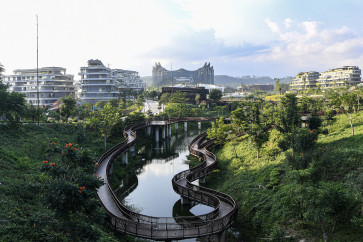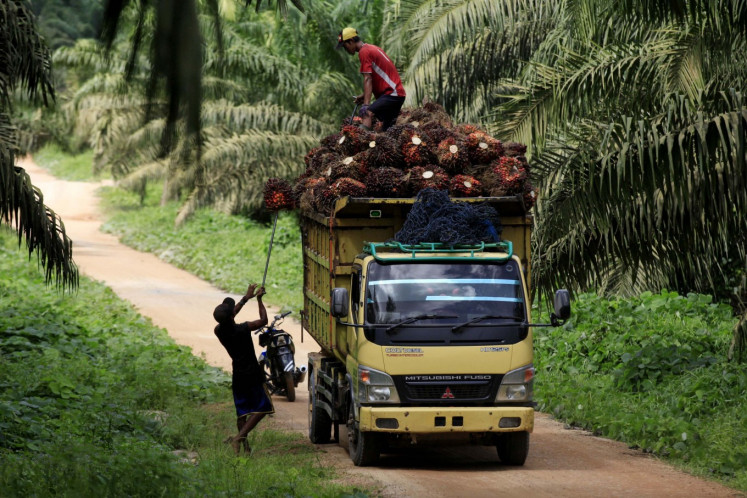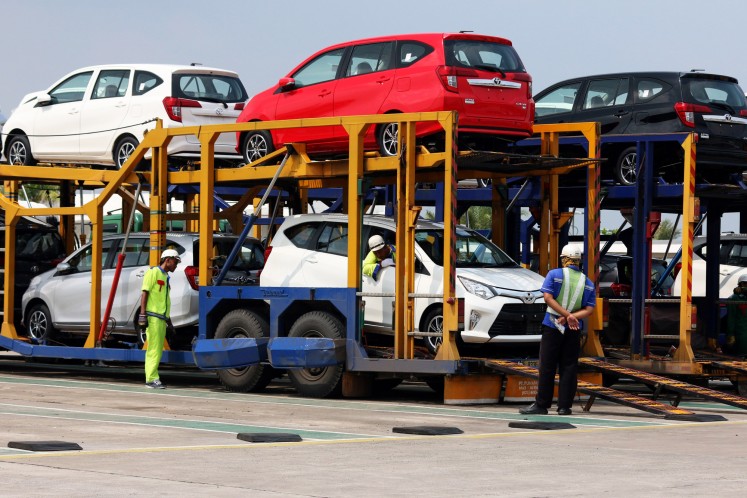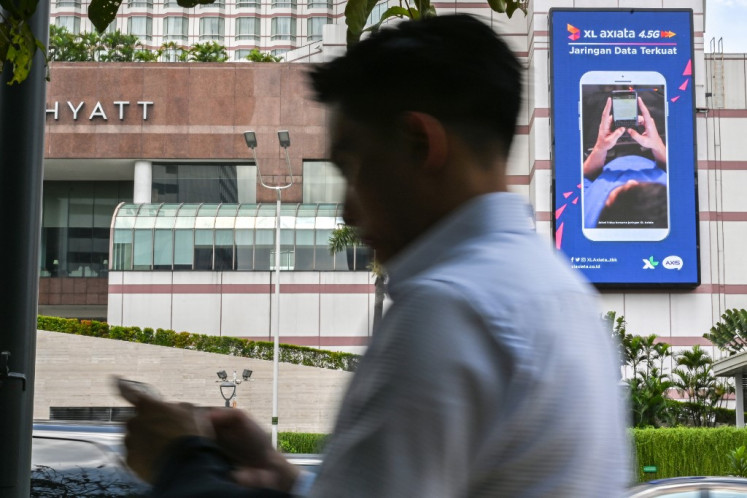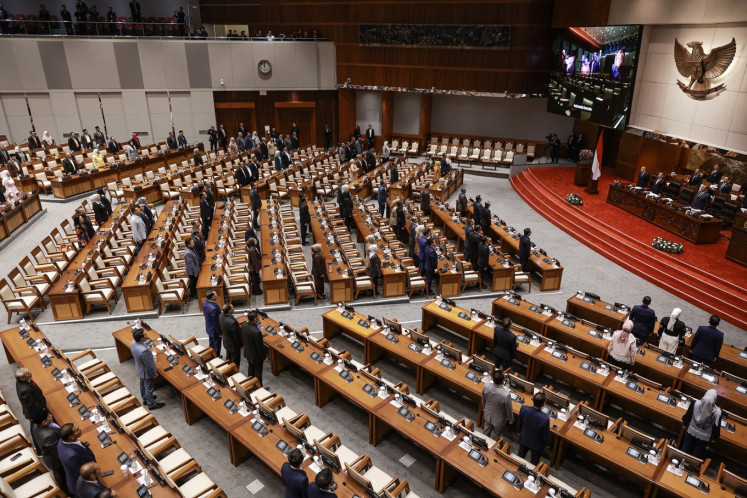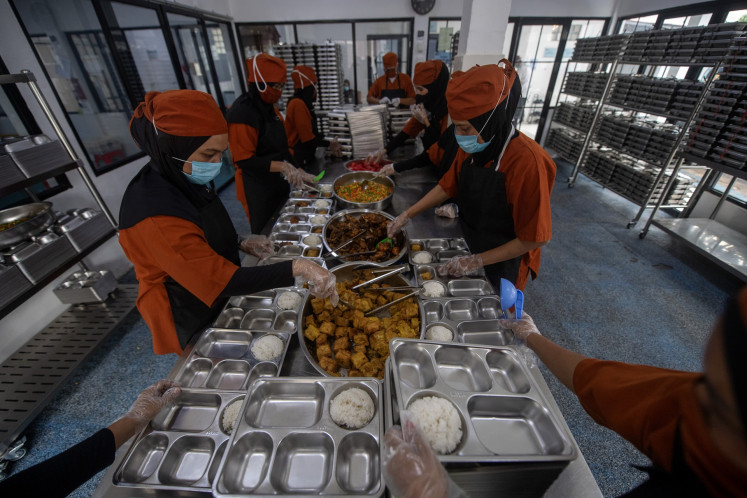Popular Reads
Top Results
Can't find what you're looking for?
View all search resultsPopular Reads
Top Results
Can't find what you're looking for?
View all search resultsNusantara an energizing site for construction industry
The government must prepare a number of business schemes and incentives to attract investors, mainly from the private sector.
Change text size
Gift Premium Articles
to Anyone
I
n 2019, the National Development Planning Agency (Bappenas) said the nation’s new capital would require Rp 460 trillion (US$31 billion) in investment. This consisted of Rp 265.1 trillion for supporting infrastructure, namely buildings, housing for civil servants and members of the police and Indonesian Military (TNI) and education and health facilities; Rp 160.2 trillion for facilities and infrastructure; Rp 32.7 trillion for the construction of legislative, executive and judicial buildings; and Rp 8 trillion for land acquisition.
In addition, Nusantara has the potential to increase the gross regional domestic product (GRDP) by 0.1 percent, with the emergence of new jobs and growth in the construction sector, especially infrastructure.
The new capital will indeed take a long time to develop. According to the documents from the capital city authority, the city will cover some 324,000 hectares. It will be divided into several sections, namely the IKN Development Area (KPKIN) of 199,000 ha; the IKN Area (KIKN) of 56,180 ha; the Central Government Core Area (KIPP) of 6,671 ha; and other strategic physical infrastructure.
Therefore, the megaproject will help Indonesia's construction sector recover strongly after being hit by the COVID-19 pandemic. Some state-owned construction enterprises have won tenders for the construction of the city’s toll roads, worker housing, connecting bridges and presidential office building.
In fact, research by Mirae Asset Sekuritas, an investment company, shows the bright prospects for the construction sector. It is estimated that the compound annual growth rate (CAGR) for the construction sector will increase by 8.3 percent in the period of 2020 to 2024, owing to the support of government infrastructure projects in various sectors, especially the transportation sector.
The massive development of Nusantara, especially in opening up a new land, requires various types of heavy equipment and is expected to have positive implications on the performance of the related industry sector. Moreover, the government also hopes the construction sector will gradually recover through diverse national and private infrastructure projects.
Various types of heavy equipment have now begun to be massively marketed to contractors who won the tenders for Nusantara’s initial infrastructure work. Dealers are also competing to provide heavy equipment, including competitive funding packages to support their marketing, resulting in an increasing quantity of heavy equipment entering the Nusantara area, including excavators, motor graders, compactors, backhoe loaders and medium dozers.
This, of course, is one of the drivers of the economic sector that supports the capital city project.
Based on Nusantara’s website, its development phase in 2022-2024 will focus on the initial phase of relocation, such as the construction of the Presidential Palace, the People’s Consultative Assembly/House of Representatives Building, basic infrastructure and civil servant housing. Afterward, the development phase in 2025-2035 will focus on developing core areas such as innovation and economic centers, priority economic sectors and completing the transfer of government to the new city.
The city is planned as a superhub consisting of eight large clusters, including six economic clusters: the clean technology industry cluster, the integrated pharmaceutical cluster, the sustainable agricultural industry cluster, the ecotourism and health cluster, the chemical and derivative products cluster and the low-carbon energy cluster.
There are two supporting clusters, namely the 21st century education cluster, as well as the smart city and industrial center 4.0.
Then, how about the funding scheme?
It is planned that 20 percent of the project's funding needs will be supported by the state budget, while the rest of it will be financed by cooperation schemes with both state-owned enterprises (SOEs) and the private sector. In this case, we can learn from Malaysia, which moved its government center from Kuala Lumpur to Putrajaya in 1995. Funding for the project came from state finances and is said to have positively impacted Putrajaya's economy (detik.com, 2013).
The government must prepare a number of business schemes and incentives to attract investors, mainly from the private sector. One of the schemes that is currently being offered to the private sector is related to land use in the new capital regarding state-owned property. The private sector can choose the project, for example the priority of infrastructure provision projects, and the term of this cooperation can be up to 50 years and extendable. The form of compensation provided is non-tax state revenue sharing (PNBP) between the government and private investors with a flexible mechanism through offers, tenders or direct appointments in accordance with applicable laws and regulations.
Some parties, however, estimate that the construction sector still faces high pressure this year and some downward trends with the upcoming elections that could generally put pressure on project development. In addition, it is feared that the predicted global recession will affect this sector. A 2022 study by the Jakarta-based Centre for Strategic and International Studies (CSIS) quoted experts’ perceptions that it would be difficult for the new capital project to meet the government’s target and that the skyrocketing land prices in the area would trigger inflation.
The government has budgeted Rp 392 trillion for infrastructure development this year, up 7.75 percent from the 2022 budget outlook of Rp 363.8 trillion, that includes allocations for capital city infrastructure work. This shows the government's efforts to support and allocate sufficient funds to continue the infrastructure development of this strategic project.
We should bear in mind that the capital city strategic project is based on the big aspirations that will have far-reaching impacts in the future, first as a strategic step for economic transformation to achieve Indonesia's 2045 vision, second to encourage inclusive and equitable economic growth, including in the eastern part of Indonesia and third as a response to the fact that Jakarta is no longer suitable as the country’s capital with all its problems.
Compared to these risks, the new capital city project is a megaproject that can provide a breath of fresh air for the Indonesian construction sector. Therefore, it is worthy of our support and hopefully the process will run as expected.
Hopefully, every step of the process of moving the national capital to Nusantara can run smoothly. The capital city of the future can serve as a catalyst for Indonesia's development through an environmentally friendly smart city and promulgate new economic growth magnets that are not focused on one island.
Nusantara can emerge as a center for innovation in accelerating Indonesia's development in 2045, the milestone for Indonesia’s great transformation onward.
***
The writer is chief operating officer for construction, forestry and agriculture at PT Trakindo Utama. The views expressed are his own.



